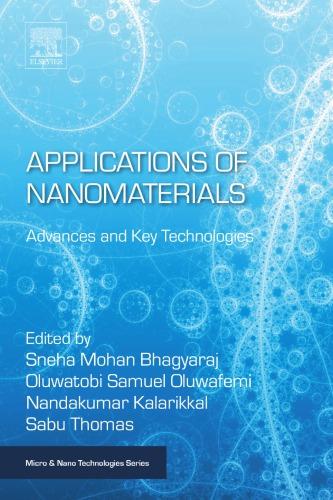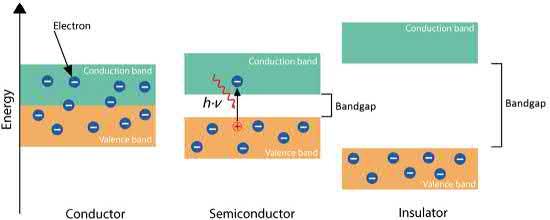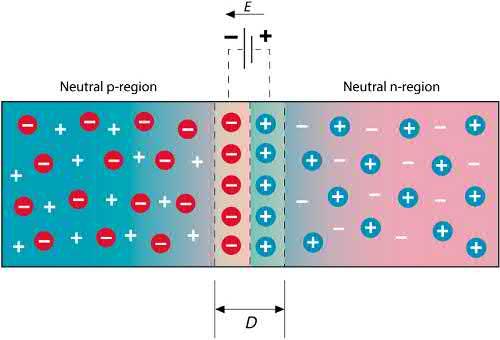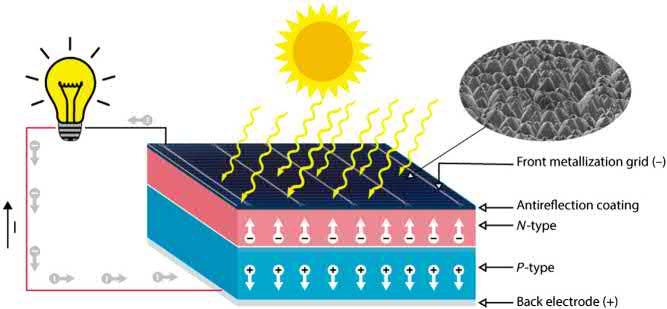https://ebookmass.com/product/nanomaterials-for-solar-cell-
Instant digital products (PDF, ePub, MOBI) ready for you
Download now and discover formats that fit your needs...
Applications of Nanomaterials : Advances and Key Technologies. Kalarikkal
https://ebookmass.com/product/applications-of-nanomaterials-advancesand-key-technologies-kalarikkal/
ebookmass.com
Characterization Techniques for Perovskite Solar Cell Materials Meysam Pazoki
https://ebookmass.com/product/characterization-techniques-forperovskite-solar-cell-materials-meysam-pazoki/
ebookmass.com
Nanomaterials for food applications Amparo
https://ebookmass.com/product/nanomaterials-for-food-applicationsamparo/
ebookmass.com
Gothic Hauntology: Everyday Hauntings and Epistemological Desire 1st Edition Joakim Wrethed
https://ebookmass.com/product/gothic-hauntology-everyday-hauntingsand-epistemological-desire-1st-edition-joakim-wrethed/
ebookmass.com
Stern's Introductory Plant Biology, 15th Edition Bidlack https://ebookmass.com/product/sterns-introductory-plant-biology-15thedition-bidlack/
ebookmass.com
Literary Studies and Human Flourishing James F. English
https://ebookmass.com/product/literary-studies-and-human-flourishingjames-f-english/
ebookmass.com
New and Future Developments in Microbial Biotechnology and Bioengineering. Aspergillus System Properties and Applications 1st Edition Vijai G. Gupta
https://ebookmass.com/product/new-and-future-developments-inmicrobial-biotechnology-and-bioengineering-aspergillus-systemproperties-and-applications-1st-edition-vijai-g-gupta/ ebookmass.com
Dalziel and Pascoe Hunt the Christmas Killer & Other Stories Reginald Hill
https://ebookmass.com/product/dalziel-and-pascoe-hunt-the-christmaskiller-other-stories-reginald-hill-2/
ebookmass.com
Practical risk management for EPC/design-build projects: manage risks effectively - stop the losses First Edition Salmon
https://ebookmass.com/product/practical-risk-management-for-epcdesign-build-projects-manage-risks-effectively-stop-the-losses-firstedition-salmon/
ebookmass.com
Mosbyu2019s https://ebookmass.com/product/mosbys-essentials-for-nursingassistants-6th-edition/
ebookmass.com
NanomaterialsforSolar CellApplications NanomaterialsforSolar CellApplications Editedby
SABUTHOMAS SchoolofChemicalSciences, MahatmaGandhiUniversity,Kottayam,India; InternationalandInterUniversity, CentreforNanoscienceandNanotechnology, MahatmaGandhiUniversity,Kottayam,India
ELHADJIMAMOURSAKHO DepartmentofChemicalSciences (FormerlyAppliedChemistry), UniversityofJohannesburg
NANDAKUMARKALARIKKAL InternationalandInterUniversity, CentreforNanoscienceandNanotechnology, MahatmaGandhiUniversity,Kottayam,India
SAMUELOLUWATOBIOLUWAFEMI DepartmentofChemicalSciences (FormerlyAppliedChemistry), UniversityofJohannesburg
JIHUAIWU ProfessorofMaterialsandChemistry,Vice-PresidentofHuaqiao University,DirectorofEngineeringResearchCenterof Environment-FriendlyFunctionalMaterials,MinistryofEducation, DirectorofInstituteofMaterialsPhysicalChemistry, HuaqiaoUniversity,Xiamen,Fujian,P.R.China
Elsevier
Radarweg29,POBox211,1000AEAmsterdam,Netherlands TheBoulevard,LangfordLane,Kidlington,OxfordOX51GB,UnitedKingdom 50HampshireStreet,5thFloor,Cambridge,MA02139,UnitedStates
Copyright©2019ElsevierInc.Allrightsreserved.
Nopartofthispublicationmaybereproducedortransmittedinanyformorbyanymeans, electronicormechanical,includingphotocopying,recording,oranyinformationstorageand retrievalsystem,withoutpermissioninwritingfromthepublisher.Detailsonhowtoseek permission,furtherinformationaboutthePublisher’spermissionspoliciesandour arrangementswithorganizationssuchastheCopyrightClearanceCenterandtheCopyright LicensingAgency,canbefoundatourwebsite: www.elsevier.com/permissions
Thisbookandtheindividualcontributionscontainedinitareprotectedundercopyrightby thePublisher(otherthanasmaybenotedherein).
Notices
Knowledgeandbestpracticeinthisfieldareconstantlychanging.Asnewresearchand experiencebroadenourunderstanding,changesinresearchmethods,professionalpractices, ormedicaltreatmentmaybecomenecessary.
Practitionersandresearchersmustalwaysrelyontheirownexperienceandknowledgein evaluatingandusinganyinformation,methods,compounds,orexperimentsdescribed herein.Inusingsuchinformationormethodstheyshouldbemindfuloftheirownsafety andthesafetyofothers,includingpartiesforwhomtheyhaveaprofessionalresponsibility.
Tothefullestextentofthelaw,neitherthePublishernortheauthors,contributors,or editors,assumeanyliabilityforanyinjuryand/ordamagetopersonsorpropertyasamatter ofproductsliability,negligenceorotherwise,orfromanyuseoroperationofanymethods, products,instructions,orideascontainedinthematerialherein.
BritishLibraryCataloguing-in-PublicationData
AcataloguerecordforthisbookisavailablefromtheBritishLibrary
LibraryofCongressCataloging-in-PublicationData
AcatalogrecordforthisbookisavailablefromtheLibraryofCongress
ISBN:978-0-12-813337-8
ForInformationonallElsevierpublications
visitourwebsiteat https://www.elsevier.com/books-and-journals
Publisher: MatthewDeans
AcquisitionEditor: ChristinaGifford
EditorialProjectManager: AliAfzal-Khan
ProductionProjectManager: R.VijayBharath
CoverDesigner: MatthewLimbert
TypesetbyMPSLimited,Chennai,India
ListofContributors AntonioAbate
HelmholtzCenterforMaterialsandEnergy,Berlin,Germany
Y.Akila
DepartmentofPhysics,CoimbatoreInstituteofTechnology,Coimbatore,India
AlexanderV.Akkuratov
InstituteforProblemsofChemicalPhysicsofRussianAcademyofSciences, Chernogolovka,RussianFederation
MarcieBlack
AdvancedSiliconGroup,Lincoln,MA,UnitedStates
DanielChemisana
AppliedPhysicsSectionoftheEnvironmentalScienceDepartment,PolytechnicSchool, UniversityofLleida,Lleida,Spain
SaniatAhmedChoudhury
IndependentUniversity,Bangladesh(IUB),Dhaka,Bangladesh
MustafaHabibChowdhury
IndependentUniversity,Bangladesh(IUB),Dhaka,Bangladesh
WenqiDuan
ElectricalandComputerEngineeringDepartment,UniversityofIowa,IowaCity,IA, UnitedStates
FatemaFairooz
IndependentUniversity,Bangladesh(IUB),Dhaka,Bangladesh
LeandroA.Faustino
LaboratoryofPhotochemistryandMaterialsScience,InstituteofChemistry,Federal UniversityofUberlandia,Uberlandia,Brazil
NaokiFukata
InternationalCenterforMaterialsNanoarchitectonics,NationalInstituteforMaterials Science,Tsukuba,Japan
BingtaoGao
ElectricalandComputerEngineeringDepartment,UniversityofIowa,IowaCity,IA, UnitedStates
PengGao
CASKeyLaboratoryofDesignandAssemblyofFunctionalNanostructures,andFujian KeyLaboratoryofNanomaterials,FujianInstituteofResearchontheStructureofMatter, ChineseAcademyofSciences,Fuzhou,P.R.China;LaboratoryofAdvancedFunctional Materials,XiamenInstituteofRareEarthMaterials,HaixiInstitute,ChineseAcademyof Sciences,Xiamen,P.R.China
ChangKookHong
PolymerEnergyMaterialsLaboratory,SchoolofAppliedChemicalEngineering, ChonnamNationalUniversity,Gwangju,SouthKorea
RajanJose
NanostructuresRenewableEnergyMaterialsLaboratory,FacultyofIndustrialSciences& Technology,UniversitiMalaysiaPahang,Gambang,Malaysia
HyungjinKim
PolymerEnergyMaterialsLaboratory,SchoolofAppliedChemicalEngineering, ChonnamNationalUniversity,Gwangju,SouthKorea
P.SenthilKumar
DepartmentofChemicalEngineering,SSNCollegeofEngineering,Chennai,India
IliyaE.Kuznetsov
InstituteforProblemsofChemicalPhysicsofRussianAcademyofSciences, Chernogolovka,RussianFederation
ChrysovalantouLamnatou
AppliedPhysicsSectionoftheEnvironmentalScienceDepartment,PolytechnicSchool, UniversityofLleida,Lleida,Spain
JunmingLi
HelmholtzCenterforMaterialsandEnergy,Berlin,Germany
XiaoxiaoLin
CASKeyLaboratoryofDesignandAssemblyofFunctionalNanostructures,andFujian KeyLaboratoryofNanomaterials,FujianInstituteofResearchontheStructureofMatter, ChineseAcademyofSciences,Fuzhou,P.R.China;LaboratoryofAdvancedFunctional Materials,XiamenInstituteofRareEarthMaterials,HaixiInstitute,ChineseAcademyof Sciences,Xiamen,P.R.China
SawantaS.Mali
PolymerEnergyMaterialsLaboratory,SchoolofAppliedChemicalEngineering, ChonnamNationalUniversity,Gwangju,SouthKorea
AndressaV.Muller
FederalUniversityofABC,SantoAndré,Brazil
N.Muthukumarasamy
DepartmentofPhysics,CoimbatoreInstituteofTechnology,Coimbatore,India
Mu.Naushad
DepartmentofChemistry,CollegeofScience,KingSaudUniversity,Riyadh,Saudi Arabia
BarbaraN.Nunes
LaboratoryofPhotochemistryandMaterialsScience,InstituteofChemistry,Federal UniversityofUberlandia,Uberlandia,Brazil
TakeoOku
DepartmentofMaterialsScience,TheUniversityofShigaPrefecture,Hikone,Japan
OluwatobiS.Oluwafemi
CentreforNanomaterialsScienceResearch,UniversityofJohannesburg,Johannesburg, SouthAfrica;DepartmentofChemicalSciences(FormerlyAppliedChemistry),University ofJohannesburg,DoornfonteinCampus,Johannesburg,SouthAfrica
GerkoOskam
DepartamentodeFísicaAplicada,CINVESTAV-IPN,Mérida,México
SundararajanParani
DepartmentofChemicalSciences(FormerlyAppliedChemistry),Universityof Johannesburg,DoornfonteinCampus,Johannesburg,SouthAfrica;Centrefor NanomaterialsScienceResearch,UniversityofJohannesburg,Johannesburg,SouthAfrica
JyotiV.Patil
PolymerEnergyMaterialsLaboratory,SchoolofAppliedChemicalEngineering, ChonnamNationalUniversity,Gwangju,SouthKorea;ThinFilmMaterialsLaboratory, DepartmentofPhysics,ShivajiUniversity,Kolhapur,India
PramodS.Patil
ThinFilmMaterialsLaboratory,DepartmentofPhysics,ShivajiUniversity,Kolhapur, India
AntonioOtavioT.Patrocinio
LaboratoryofPhotochemistryandMaterialsScience,InstituteofChemistry,Federal UniversityofUberlandia,Uberlandia,Brazil
K.GracePavithra
DepartmentofChemicalEngineering,SSNCollegeofEngineering,Chennai,India
AndreS.Polo
FederalUniversityofABC,SantoAndré,Brazil
DenaPourjafari
DepartamentodeFísicaAplicada,CINVESTAV-IPN,Mérida,México
RashidAhmedRifat
IndependentUniversity,Bangladesh(IUB),Dhaka,Bangladesh
A.Riverola
AppliedPhysicsSectionoftheEnvironmentalScienceDepartment,PolytechnicSchool, UniversityofLleida,Lleida,Spain
ElHadjiMamourSakho
DepartmentofChemicalSciences(FormerlyAppliedChemistry),Universityof Johannesburg,DoornfonteinCampus,Johannesburg,SouthAfrica;Centrefor NanomaterialsScienceResearch,UniversityofJohannesburg,Johannesburg,SouthAfrica
SubramaniThiyagu
InternationalCenterforYoungScientists(ICYS),NationalInstituteforMaterialsScience, Tsukuba,Japan;InternationalCenterforMaterialsNanoarchitectonics,NationalInstitute forMaterialsScience,Tsukuba,Japan
SabuThomas
InternationalandInterUniversityCentreforNanoscienceandNanotechnology, MahatmaGandhiUniversity,Kottayam,India
FatimaToor
ElectricalandComputerEngineeringDepartment,UniversityofIowa,IowaCity,IA, UnitedStates
PavelA.Troshin
InstituteforProblemsofChemicalPhysicsofRussianAcademyofSciences, Chernogolovka,RussianFederation;SkolkovoInstituteofScienceandTechnology, Moscow,RussianFederation
R.JoseVarghese
InternationalandInterUniversityCentreforNanoscienceandNanotechnology, MahatmaGandhiUniversity,Kottayam,India;DepartmentofChemicalSciences (FormerlyAppliedChemistry),UniversityofJohannesburg,DoornfonteinCampus, Johannesburg,SouthAfrica;CentreforNanomaterialsScienceResearch,Universityof Johannesburg,Johannesburg,SouthAfrica
DhayalanVelauthapillai
DepartmentofChemicalSciences(FormerlyAppliedChemistry),Universityof Johannesburg,Johannesburg,SouthAfrica
A.Vossier
CNRS-PROMES,Odeillo,France
QamarWali
NUTECHSchoolofAppliedSciencesandHumanities,NationalUniversityof Technology,Islamabad,Pakistan
QiongWang
HelmholtzCenterforMaterialsandEnergy,Berlin,Germany
JihuaiWu
ProfessorofMaterialsandChemistry,Vice-PresidentofHuaqiaoUniversity,Directorof EngineeringResearchCenterofEnvironment-FriendlyFunctionalMaterials,Ministryof Education,DirectorofInstituteofMaterialsPhysicalChemistry,HuaqiaoUniversity, Xiamen,Fujian,P.R.China
Preface Theinterestsofdevelopingrenewable,sustainable,andcleanenergy sourceshavebecomeveryhighbecauseoftheemergenceofglobal warmingandthevastuseofnonrenewableenergysources,suchasnatural gas,oil,andcoal.Severalrenewableenergysources,suchaswaveand tidalpower,windturbines,hydropower,solarcells,fuelcells,andsolar thermalarebeinginvestigatedtoevaluatetheirpotentialtoaddresslargescaledemand.Amongthesesources,solarphotovoltaic(PV)technology, whichusessolarradiationenergy,hasbeenconsideredasthemostabundant,inexhaustible,clean,andsustainableenergyresource.Solarcells directlyconverttheincidentsolarradiationintoelectricityviathePV effectandcanconvertuptoabout20%ofincomingsolarradiation.Solar cellsareclassifiedintothreegenerations,whicharebasedontheirmaterialsandmanufacturingprocess.Silicon(Si)singlecrystalwafersandbulk polycrystallineSiwafersarethefirstgenerationofsolarcells.Thesecells, accordingtothemanufacturingproceduresandwaferquality,givesolar conversionefficienciesbetween12%and16%andarelargelyleadingthe solarcellsmarket.Thethin-filmsolarcellsthataremadefromdifferent materials,suchasamorphoussilicon,a-Si,cadmiumtelluride,cadmium indiumselenide,orthinsiliconfilmsonindiumtinoxide,t-Si,arethe secondgenerationofsolarcells.Thistechnologyprovideslessexpensive solarcellswithlowersolarenergyconversionincomparingtothesilicon waferstechnology.Thethirdandemergingsolarcellsgeneration,which canproducehighefficiencydevicesatlowproductioncostsofsolarcells, arebasedonpolymersolarcells,dyesynthesizedsolarcells,quantumdots solarcells,andperovskitesolarcells.
Recently,nanomaterialshaveemergedasthenewbuildingblocksto constructsolarcellassemblies.Theuseofnanomaterialsinsolarcellapplicationisgainingtremendousinterestandbuildinggreatexpectationsin theacademiccommunity,industry,andgovernments.Amotivationto develophighefficiencyandcost-effectivenanostructuredmaterialsfor solarcellsisgrowingandaspecificcontributionofnanotechnologyto varioussolarenergyisbeingdeveloped.Nanomaterialsprovidenew methodstoapproachsolarenergyconversionwithaflexibleandpromisingmaterialplatform.Thereforenanostructuredmaterials,suchasmetal oxide,quantumdots,perovskite,graphene,carbonnanotubes,and
fullereneplayasignificantroleinsolarcellapplications.Hence,ithas beendemonstratedthatnanostructuredmaterialscanimprovetheperformanceofsolarcellsbyenhancingbothlighttrappingandphoto-carrier collection.Furthermore,thesynthesis,characterizations,andutilizationof thesenovelnanostructureslieattheinterfaceamongphysics,chemistry, engineering,andmaterialsscience.Thestructure,size,andshapeofthese nanomaterialshavesignificanteffectovertheefficiencyofthesolarenergy conversion.
Overthelasttwodecadestherearenumerousresearchpaperson nanostructuredmaterialsforsolarcellapplications.Afewresearchpapers arebasedonmetaloxide-basedsolarcells,quantumdotsensitizedsolar cells,dyesensitizedsolarcells,andpolymernanocompositessolarcells. Recently,nano-carbonbasedmaterialssuchasgraphene,graphenederivatives,carbonnanotube,andfullerenehavebeenextensivelyinvestigated onsolarcells.However,uptonow,nosystematiceffortshavebeenmade tocomeoutwithabookthatexclusivelycoversthesynthesis,characterizations,andpropertiesofnanomaterialsforsolarcellapplicationsthatare verymuchrequiredforacademeandindustry.
Thusthisbookreportsonthedevelopmentsinthesynthesisand characterizationsofnanomaterialsforsolarcells.Thebookstartswitha discussiononthefundamentalsofnanomaterialsforsolarcells,includinga discussiononthelife-cycleassessmentsandcharacterizationtechniques.It thenfollowswithareviewofthevarioustypesofsolarcells:thinfilm, metaloxide,nanowire,nanorods,andnanoporousmaterials,andconcludeswithnanocarbonmaterials.Inaddition,itincludesareviewof quantumdotsensitized,perovskite,andpolymernanocomposites-based solarcells.
CHAPTER1 Fundamentalsofsolarcells A.Riverola1,A.Vossier2 andDanielChemisana1
1AppliedPhysicsSectionoftheEnvironmentalScienceDepartment,PolytechnicSchool,Universityof Lleida,Lleida,Spain
2CNRS-PROMES,Odeillo,France
Contents
1.1 Introduction3
1.2 Thesolarresource,solarenergy4
1.3 Principlesofphotovoltaicenergyconversion7
1.4 Semiconductors7
1.4.1 Bands,electrons,andholes8
1.4.2 Doping,nandptypes9
1.4.3 Generationandrecombinationofelectron holespairs11
1.5 Solarcellstructure,operation,andmainparameters13
1.5.1 p nJunction13
1.5.2 Structure,operation,andmainparametersofsolarcells15
1.6 Upperlimitforsolarenergyconversion20
1.7 ReducingBoltzmannlosses:opticalconcentrationandangularrestriction22
1.7.1 Opticalconcentration23
1.7.2 Angularrestriction25
1.8 Reducingthermalizationandbelow-Eg losses:advancedconceptsof photovoltaiccells26
1.8.1 Multijunction(MJ)solarcells26
1.8.2 Otherconcepts28 References32 Furtherreading33
1.1Introduction
Duringthelastdecades,photovoltaics(PVs)havebecomeoneofthe mostpromisingrenewableenergytechnologies,withinstalledcapacityof PVpanelsapproaching100GWin2018.Highconversionefficienciesat reasonablecostsundoubtedlyrepresenta sine-qua-non conditiontobefulfilledtowardpromotinganevenwiderdeploymentofsolarelectricity.
NanomaterialsforSolarCellApplications
DOI: https://doi.org/10.1016/B978-0-12-813337-8.00001-1
©2019ElsevierInc. Allrightsreserved.
ThedevelopmentofstrategiesaimingatanimprovedPVefficiencyhas instigatedabroadrangeofresearchactivitiesinthemostrecentdecades. Withthisobjective,strategiesinvolvingnanomaterials,implementationof nanoobjects,ormanipulationoflightatananometerscale,hasprompted aconsiderableamountofresearch.Thesedifferentstrategieswillbecarefullyreviewedinthenextbookchapters.Inthischapter,weaimtoprovideseveralfundamentalconceptsnecessarytobettergrasptheunderlying physicalmechanismsgoverningPVcells(Adetailedexplanationofthese conceptscanbefoundinothertextbooks [1,2]).
ThePVeffect,whichwasdiscoveredbyEdmundBecquerelin1839, basicallyimpliesdirectconversionofsunlightintoelectricityusingaPV cellmadeofasemiconductormaterialtailoredtoensurebothahigh absorptionofsunlightandanefficientextractionofthephotogenerated carriers.
1.2Thesolarresource,solarenergy Thespectraldistributionofsunlightspansabroadrangeofwavelengths rangingfromtheultraviolettothenearinfrared.Therelationbetween thephotonenergy(E)anditswavelength(λ)isgivenby:
where c isthelightspeedinvacuum(approximately3.00 3 108 ms 1) and h isthePlanck’sconstant(6.63 3 10 34 Js).
Thespectraldistributionofsunlightmayvarynoticeablydepending on(1)thepositionofthesuninthesky(whichisfunctionofthecharacteristiclatitudeofthesitewherethePVcellissupposedtooperate,the timeoftheday,andthedayintheyear)and(2)typicalatmosphericparametersvalues,whicharelikelytochangenoticeablydependingontheclimaticandatmosphericconditions.
Airmass(AM)istheatmosphericvariabletowhichthesolarspectrum isnormallymoresensitive.Itisdefinedasthedistance,relativetotheshortest(vertical)pathlength,thatsunraystraversethroughtheatmosphere beforeimpactingontheEarth’ssurface.AMcansimplybedefinedas:
where θ isthesocalled solarzenithangle,thatis,theanglebetweenthe zenithandthecenterofthesun’sdisc.
Nonetheless,amoreaccurateexpressionthatconsiderstheEarth’ scurvatureiscommonlyusedtopredictordefinethesolarspectrum [3]
Fig.1.1 showstwocommonlyusedsolarspectra:AM0(standard extraterrestrialsolarspectrummainlyusedbytheaerospacecommunity) andAM1.5Global(wherethereceivingsurfaceisdefinedasaninclined planeat37degreestilttowardtheequator,facingthesun).
ThespectraldistributioncorrespondingtoAM0solarspectrumcanbe approximated,withagoodaccuracy,tothespectrumofablackbodyat 5758K(Thespectraldistributionforblackbodyradiationbeingonly determinedbyitstemperature,asstatedbyPlanck’slaw).
TheAM1.5Globalspectrumoftenservesastheterrestrialstandard (reference),andismeasuredonasurfacethatfacesthesun,withatilt angleof37degreesoverthehorizontalplane,underspecifiedatmospheric conditions[aerosolopticaldepth(AOD)of0.084,precipitablewater
Figure1.1 Extraterrestrialsolarspectrum(AM0)andthestandardterrestrialspectrum(AM1.5Global). RetrievedfromASTM,G173-03Standardtablesforreferencesolar spectralirradiances:directnormalandhemisphericalon37°tiltedsurface,Bookof Standards,14.04.2004 [4].
(PW)of1.42cmandtotalcolumnozoneequivalentof0.34cm].An AMof1.5correspondstoasolarzenithangleofapproximately48 degrees.Passingthroughtheatmosphere,thespectrumisattenuateddifferentlyforeachwavelengthduetoabsorptionorscatteringbyatmosphericparticles.Forinstance,watervaporabsorptionbandsaremainly locatedinthenear-infraredandinfraredregionsofthespectrum (around0.94,1.10,and1.40 µm).Theamplitudeoflightscatteringin theatmosphereiscorrelatedtotheAMvalue:thehighertheAM,the higherthelightscatteringbyatmosphericmolecules(suchasnitrogen andoxygen).Consequently,theterrestrialirradiance(whichiscommonlynormalizedto1000Wm 2 )islowerthantheextraterrestrial irradiance(around1353Wm 2 ).Thepeaksolarirradiance,whichcorrespondstowavelengthstypicallycomprisedbetween0.4and0.8 µm,is associatedwith “ visible ” lightinthesensethathumanvisionevolvedto beparticularlysensitivetothisspectralrange.Oneshoulddistinguish differentdefinitionsforsolarirradiance:directnormalirradiance(DNI) referstothephotonscomingdirectlyfromthesun.Itshouldbenoted thatthedefinitionofDNIisnotunivocal.Thisambiguitystemsfrom thefactthattheangulardistancefromthecenterofthesunandthe penumbrafunctionarenotwelllimited.SeveraldefinitionsofDNIcan befoundintheliterature,explicitlyorimplicitlyreferringtodifferent limitanglesandpenumbrafunctions,whichinherentlyleadtovarying amountsofintegratedradianceinthevicinityofthesun [5].Global HorizontalIrradiancereferstothetotalirradiancereceivedfromabove byahorizontalsurface,andincludesboththecontributionsofDNIand diffuseradiation,associatedtophotonsscatteredintheatmosphere.The amountofdiffuseradiationchangesdependingontheclimate(and especiallythecloudcover)andthelatitude,andtypicallyrepresent B15%ofthetotalradiation.AM1.5Dsolarspectrumiscommonlyused asareferencespectrumforthecharacterizationofconcentratorsolar cells(becauseofthefundamentalinabilityofthesecellstoconcentrate diffuselight).
Theotheratmosphericvariablesthatsignificantlyaffectthesolar spectrumcharacteristicsareAODandPW.AODcharacterizestheradiativestrengthofaerosols(urbanhaze,s mokeparticles,desertdust,seasalt ...)intheverticaldirectionwhilePWistheamountofcondensed watercorrespondingtothetotalwatervaporcontainedinavertical atmosphericcolumnaboveanylocation.Watervaporhasstrongabsorptionbandsinthenearinfrared,whichdirectlyimpactsthespectrum.
1.3Principlesofphotovoltaicenergyconversion Solarcellsshouldbedesignedtoensuremaximumabsorptionofphotons comingfromthesun,andtopromoteelectronstohigh-energystates wheretheyareabletomove.Thematerialshouldhaveatleasttwoenergeticallyseparatedbandstoguaranteeanefficientextractionofthecharges carriedfromthePVcell.Thebandgap(Eg)ofPVcellcorrespondstothe energygapseparatingthemaximumenergylevelinthelow-energyband [referredas “valenceband” (VB)],fromtheminimumenergylevelinthe high-energyband[knownas “conductionband” (CB)],wheretheelectronsshouldbepromoted.Thetypicaltimeduringwhichtheelectronis maintainedinahigh-energystateshouldbehighenoughtoguaranteean efficientextractionoftheexcitedcarriers[aconstraintthatmaybefulfilled ifthebandgapishigherthanthethermalenergy kBT (where kB isthe Boltzmann’sconstantand T thetemperature)].
Onlyphotonswithenergyhigherthan Eg areabletopumpelectrons fromtheVBtotheCB.Thechargeseparationmechanism,whichis requiredtoextractchargecarriersfromthePVcells,involvestheuseofa “membrane” toseparatethedifferentchargecarriers.Thisiscommonly achievedwithanelectricfieldoriginatingfromthepotentialdifference betweencontacts.
Semiconductormaterialshavehistoricallybeenseenasaveryattractive optiontowardefficientlyconvertingsunlightintoelectricityusingthePV effect.Emergingtechnologiesusingorganicor/andinorganicsubstances suchasPerovskiteorpolymersolarcellsarecurrentlyinstigatingagreat amountofresearchwork,butthesetechnologieswillnotbeaddressedin thischapter,sincetheunderlyingphysicalmechanismsaresensiblydifferent(thereadershouldrefertothefollowingchaptersfordeeperinsights intothesetechnologies).
1.4Semiconductors Materialscanbeclassifiedintothreemaincategories,dependingontheir typicalelectronicproperties:Semiconductorsandinsulatorsbothshowan energygapbetweentheirvalenceandCBs,whereasmetalsshowanoverlap betweenenergylevelsintheVBandtheCB(and,asaconsequence,no energygap).ThedevelopmentofefficientPVcellsrequiresbothanefficient absorptionofsolarphotons,andtheestablishmentoftwodistinctchargecarrierpopulations,whichcanonlybeachievedwithsemiconductormaterials.
Inthissection,somebasicconceptsrelatedtosemiconductorphysics willbeintroduced.Electrons,holes,andelectronicbandswillfirstbe explained.Theprinciplesofsemiconductordopingwillthenbedetailed, beforeconcludingthissection,byadescriptionofgenerationandrecombinationofelectron holespairsinsemiconductors.
1.4.1Bands,electrons,andholes Inanatom,electronsmoveinorbitalsaroundthenucleusandcanonly havecertainenergyvalues,called energylevels.Inasolidmaterialconsisting ofanimmenselyhighnumberofatoms,theoriginalorbitalsarecombined toformorbitalswithalargenumberofenergylevels.Becauseofthehuge numberofatomsinvolved,theselevelsareverycloseonefromanotherso thattheyform energybands.Thebondsbetweenatomsandtheirelectronic propertiesdeterminethebands’ energydistribution,aswellasthecrystalline structure.Forinstance,siliconatomssharefourelectronsoftheoutermost shell(valenceshell)withtheneighboringatoms,creatingstableandstrong covalentbondsthatresultinadiamondlatticetypecrystallinestructure.
Theatoms’ chemicalpropertiesaredeterminedtoagreatextentby thenumberofelectronsinthevalenceshell.Inasimilarmanner,thelast occupiedbandsdefinetheelectronicpropertiesofcrystals.Theoccupied bandwiththehighestenergy,whichcontainsthevalenceelectrons,is calledtheValenceBand(VB),whereastheunoccupiedbandwiththe lowestenergyiscalledtheConductionBand(CB).Theenergybetween bothbandsisthepreviouslymentionedbandgapenergy(Eg).
Inmetals,electronsmovewithoutdifficultyfromoneenergylevelto another,sincethevalenceandtheconductionbandsoverlapinenergy (Eg 5 0),givingrisetoahighelectricalconductivity.Insemiconductors, thevalenceandconductionbandsareseparated(0.5 , Eg , 3eV),and theVBisfilledwithbondedelectronsthatdonothavesufficientenergy toovercometheenergygapandfreelymoveinthecrystallinenetwork. Atatemperaturehigherthan0K,afractionoftheseelectronshassufficientlyhighthermalenergytobeexpelledtotheCB(thisfractionbeing afunctionofboththetemperatureandtheenergygapofthesemiconductormaterial).Insulatorshaveveryhighbandgaps,whichpractically avoidelectronsfromtheVBtobeejectedtotheCBbecauseofthehigh energyrequiredtoovercomethebandgap.Asaconsequence,theabsence offreeelectronsintheCBprecludesefficientelectricaltransport,and thesematerialsarecharacterizedbyalowconductivity. Fig.1.2 showsa schemeofinsulators,semiconductors,andconductors.
Electronswithenergyhighenoughtoovercometheelectronicgapof thematerial,becauseoftheirthermalenergyorafterabsorptionofasolar photon,maybreakfreefromtheatomsandbecomeafreeelectroninthe CB.TheremainingbrokenbondintheVBisassociatedwithavacancy referredasa “hole.” Semiconductortheorypredictsthatholesbehaveasif theywerepositivecharges.Inthepresenceofholes(orvacancies),other valenceelectronsintheVBcanmoveintothesevacancies,thusleading toanapparentmovementof “holes” intheoppositedirection.Because theconcentrationofelectronsintheVBlargelyoutnumberstheconcentrationoftheremainingvacanciesassociatedwithelectronsejectedinthe CB,itispracticallymoreconvenienttodescribethismechanismasa “holes” movement.
Semiconductorscharacterizedbyidenticalconcentrationsoffreeelectronsandholesarecalled “intrinsic.” Theconcentrationoffreecarriers (oftenreferredtoas “intrinsiccarrierconcentration”),iscorrelatedtoboth theelectronicgapofthesemiconductorandthetemperature,andtranslatestheabilityofchargecarrierstomovefromonebandtoanother underthesoleeffectoftemperature.Therefore,thehigherthetemperature,thehighernumberofelectronsintheCBandthehighertheconductivity(unlikeconductormaterialsthatshowdecreasingconductivity withincreasingtemperature).
1.4.2Doping,nandptypes Aspreviouslyexplained,theconductivityofsemiconductorsincreasesas thetemperaturerisesandthebandgapdecreases.Forexample,theelectricalconductivityofGalliumArsenide(GaAs),whichhasabandgapof 1.42eV,istwoordersofmagnitudelowerthantheconductivityof Silicon(1.11eV).
Figure1.2 Schemeofconductor,semiconductor,andinsulatorbandgaps.
Ameantocontroltheconductivityofsemiconductors,knownas doping,consistsofintroducingimpurityatomsinthecrystallinenetwork, characterizedbydifferentelectronicstructure(and,inparticular,adifferentnumberofvalenceelectrons).Onecandistinguishtwodifferentkinds ofimpurityatoms:
• Donor:Theypossessoneextravalenceelectronthatissharedwiththe lattice,asafreeelectron.Inasiliconstructure,consistingoffour valenceelectrons,phosphorousatomsaretypical donor impurities. Theseatoms,whichcomprisefivevalenceelectrons,sharefourof themwiththeirneighboringSiatomsundertheformofcovalent bonds,theremainingonebeingfreetomoveinthecrystallinenetwork.Thephosphorousatomsbecomeionized(positivelycharged) andboththeelectrondensityandtheelectricalconductivityare increased,relativetointrinsicsilicon.
• Acceptor:Unlike donors, acceptor atomscomprisefewervalenceelectronsthanthebulkatoms,andtheirintroductioninthenetworkgives risetothegenerationofextra holes:Theimpurityatomsbecomenegativelyionizedbytakingavalenceelectronfromanotherbondand thenreleasinga hole totheband,thusleadingtoincreased hole concentrationaswellashigherconductivity.Boronatomsaretypicalacceptor atomsinsiliconlattices.
Doping isthustheprocessbywhichboththeconductivityandthe concentrationofonekindofchargecarriers(eitherelectronsorholes)are increased,throughtheintroductionofimpurityatomsshowingdifferent electronicpropertiesthanthebulkatoms.Dopingallowsincreasingthe conductivitywithoutanyexternalenergyinput(light,heat ...),and
Figure1.3 Structuresofanintrinsic, n-type and p-type semiconductors.
semiconductorswithelectronicpropertiescontrolledusingthismeansare knownas extrinsic semiconductors.
Thetypeofdopingisgovernedbythenatureoftheimpurityatoms introducedinthenetwork:ifthe donor impurityconcentrationexceeds theintrinsiccarrierconcentration,thedopingis n-type.Conversely,ifthe acceptor impurityconcentrationexceedstheintrinsiccarrierconcentration, thesemiconductorbecomes p-type. Fig.1.3 schematicallyillustratesintrinsicandextrinsicsemiconductors.
1.4.3Generationandrecombinationofelectron holespairs TheprocessbywhichelectronsareexcitedfromtheVBtotheCB,creatinganelectron holepair,iscalled generation.Theinverseprocessiscalled recombination andinvolvestherelaxationoffreeelectronsfromtheCBto avacancy(hole)intheVB,thusleadingtotheannihilationofanelectron holepair.Underthermalequilibrium, Generation and Recombination occursatthesameratewithinthecelltomaintainthepopulationsofelectronsandholes.
Ifthe generation processrequiresaninputenergyprovidedbyphotons, phonons(vibrationalenergyofthelattice),orkineticenergyofotherparticles, recombination isarelaxationprocessinwhichenergyisreleased throughthesamemechanisms.
1.4.3.1Absorption Photogenerationistheprocessleadingtothecreationofane hpairin thecellafterphotonabsorption.Onlyphotonswithenergieshigherthan thebandgapmaygiverisetothegenerationofe hpairs.Photonswith energylowerthanthebandgapcannotparticipatetothephotogeneration process.Inaddition,photonswithenergyexceedingthebandgapareonly partiallyused:thedifferencebetweentheincidentphotonenergyandthe electronicgapofthecelliswastedasheat.Theprocessbywhichexcited electronsquicklyreleasetheirexcessenergyuntiltheyreachtheedgeof theCBisknownas thermalization (see Fig.1.4).Thiscoolingprocessis veryfast(typicallyoccurringatapicosecondtimescale)andfundamentally explains,togetherwiththetransparencyofPVcellstolow-energy photons,thewidediscrepancybetweenthehighefficiencywithwhichit istheoreticallypossibletoconvertsunlightintoelectricity(B90%)and thebestPVefficiencyexperimentallyachievable(whichdoesnotexceed 29%forsingle-junctionsolarcells).Photogenerationischaracterizedby the absorptioncoefficient(α) thatquantifiesthesemiconductorabsorptionas
Figure1.4 Sketchofthephotogenerationprocess,depicting(left)transparencyloss mechanism,(center)photogeneration,(right)thermalizationloss.
Figure1.5 Schemeofthemainrecombinationprocesses[Shockley Read Hall (SRH),Auger,andRadiative].
afunctionofwavelength,andwhichtranslatestheabilityforaphotonof agivenwavelengthtobeefficientlyabsorbedinthePVcell.Theabsorptionprocessiseasierindirectbandgapsemiconductorsduetotheirband structures,leadingtoveryhighabsorptioncoefficientand,asaconsequence,reducedthicknesses(thematerialthicknessrequiredtoensure completeabsorptionoftheincidentlightbeingmuchsmallerthaninthe caseofindirectbandgapsemiconductors,suchassilicon).
Therearethreemainrecombinationprocesses(Fig.1.5),whoseamplitudelargelydependonthenatureandthequalityofthesemiconductor materialsinvolved,aswellasonthetypicaldensityofchargecarriersinthe cell:(1) band-to-band recombinationreferstotheannihilationofane hpair followedbytheemissionofaphotonofcorrespondingenergy.These unavoidable recombination(inthesensethat,unlikeotherrecombination
mechanisms,theymustoccurinanyPVcell)areparticularlyeffectivein directbandgapmaterials,suchasGaAs.(2) Shockley Read Hall (SRH) recombinationinvolvesimpuritiesordefectsinthecrystallinestructure,givingrisetounwantedenergylevelsactingliketrapsintheforbiddengap: annihilationofane hpairmayoccurifbothafreeelectronintheCB, andaholeintheVB,simultaneouslyfallintoanimpuritytrap.
SRHrecombinationisoftenstronginmanysemiconductormaterials, andaparticularcareshouldbebroughttowardminimizingthedefectdensityinthePVcellthroughappropriatefabricationanddopingconditions.
Trapstatesarealsolikelytoappearatthesurfaceofthecellbecauseof materialdiscontinuities.Theserecombinationmechanisms,knownassurfacerecombination,maybeminimizedwithhigh-qualitysurface passivation.
(3) Auger recombinationreferstoathree-particlemechanismwhere theenergyofanelectronintheCB(or,alternatively,theenergyofa holeintheVB)istransferredtoanotherelectron(orhole).Theexcess energyisrapidlydissipatedasheatinthecrystallinenetwork.
Carrierlifetime(τ ) isameasureofthemeanlifetimeofafreecharge carrierbeforerecombinationoccurs.Thisparameter,whichshouldbe keptlongenoughtoensureanefficientcarrierextractionfromthePV cell,islargelydependentonthesemiconductorandthedoping.
The diffusionlength(L) expressesthemeandistancethatafreecarrier cantravelinthecellbeforearecombinationeventoccurs.Thediffusion length,whichshouldbehighenoughtoguaranteethatthecarrierstravel thedistanceseparatingthemfromthep njunction,isrelatedtothelifetimeandthediffusivity(D)bythefollowingequation:
(1.4)
Thediffusivitydetermineshowcarriersrepealeachother,whereasthe mobility(μ)allowscalculatingthecarriers’ velocityunderanelectricfield. ThesequantitiesarerelatedbyEinsteinequation:
(1.5)
1.5Solarcellstructure,operation,andmainparameters
1.5.1p nJunction
EfficientphotogenerationoffreechargecarriersisafundamentalrequirementinPVcells.However,separatecollectionofholesononeelectrode,
andelectronsontheother,requiresanadditionalmechanismtoeffectivelyextractthesetwotypesofcarriers.Thischargeseparationisusually achievedusingap njunction:theelectricfieldappearingattheinterface betweenthe p-side andthe n-side ofthesolarcellactsasamembrane, repellingthedifferentchargecarriersindifferentregionsofthecellwhere theycanbeseparatelyextracted(Fig.1.6).
Thep njunctionisrealizedbybringingtogetherann-typeandaptypesemiconductorlayer.
Onthen-side,electronsmovebydiffusiontowardthep-side(where theirconcentrationisordersofmagnitudelower),leavingpositively chargedionsbehindthem.Similarly,holesonthep-sidetendtodiffuse tothen-side(wheretheirconcentrationissignificantlylower),thuscreatingnegativelychargedions.Thepresenceofnegativelyandpositively chargedionsinclosecontactgivesrisetoanelectricfieldattheinterface betweenthetworegions,repellingelectronsinthen-sideandholesin thep-side.Theregionwheretheelectricfieldarisesiscommonlyreferred as depletionregion (D)sinceitisdepletedofcarriers.Consequently,two competingmechanismsconstitutethedrivingforcesforthemovementof chargecarriersinthecell: diffusion,causedbythegradientincarrierconcentration,representsthemaindrivingforceinthepandnneutral regions,whereas drift,causedbytheinteractionbetweentheelectricfield andtheelectricalchargesholdbyelectronsandholes,principallycontrols themovementofchargecarriersinthedepletionregion.
Figure1.6 Schemeofthep njunctionshowingthedepletionregion(D),theneutralregions,andtheelectricfieldoriginated(E).
1.5.2Structure,operation,andmainparametersofsolarcells
Inpractice,solarcellsareatwo-terminaldevicethatcanprovideelectrons toanexternalcircuitwhileilluminatedwithsufficientlyhigh-energy photons.Metalfrontandbackcontactsareusedtoextractcarriers.Since thepresenceofametalgridontopofthecellmayavoidasignificant fractionoftheincidentlighttobeabsorbed,thefrontcontactshouldbe designedtominimizeshadingonthecell.However,becausethemetal gridgeometryisalsoconstrainedbyseriesresistancelosses,theoptimal gridgeometrystemsfromacompromisebetweenshadingandseries resistance.
Thefrontsurfaceiscommonlytexturedtobothincreasethelight absorptionandlowerthereflectivity.Inaddition,antireflectioncoatings withadequaterefractiveindexesaredepositedatopofthetextureto reduceFresnellosses.
Fig.1.7 summarizestheoperationofaPVcell:(1)lightisabsorbedin thecellandcreatese hpairs(2)chargecarriersmoveunderthecombinedeffectof diffusion (intheneutralregions)and drift (inthedepletion region)(3)thep njunctionattheinterfacebetweenthen-andp-side behavesasamembrane,repellingelectronsinthen-sideandholesinthe p-side(4)electronsandholesareseparatelycollectedandinjectedinthe externalcircuit.
Applyingavoltagebetweentheelectricalcontactsofthecellwill affectthecelloperation:whennovoltageisapplied(or,alternatively, whenthecellisshort-circuited),thecellissaidtooperatein short-circuit, andthecorrespondingcurrent,whichiscalled short-circuit current(ISC),
Figure1.7 Sketchofaphotovoltaic(PV)cell.
representsthemaximumelectricalcurrentonecanextractfromaPVcell. ApplyingavoltagebiasonthePVcellleadstolarger diffusion current associatedwiththeflowofelectronsfromthen-sidetothep-side,and holesfromthep-sidetothen-side.Thiscurrent,whichflowsinopposite directiontothephotogeneratedcurrent,growsexponentiallywiththe appliedvoltage,andlowersthetotalcurrentonecanextractfromthePV cell.Forasufficientlyhighvalueoftheappliedvoltage,thediffusioncurrentequalsthephotogeneratedcurrent,andthetotalcurrent extractablefromthecellisthusequaltozero.Thecorrespondingvoltage valueisknownas open-circuit voltage(VOC),andcorrespondstothemaximumvoltagethatcanbeextractedfromaPVcell.
Theshort-circuitcurrentdependsonthespectraldistributionofthe incidentsunlight:Achievinghigh ISC necessarilyrequiresanimportant fractionoftheincomingphotonstopossessanenergyexceedingtheelectronicgapofthecell.Inaddition,eachphotonwithsufficientlyhigh energyshouldideallybeconvertedintoanelectron holepair.Theability ofanyparticularcelltofulfillthisrequirementisusuallycharacterizedby quantumefficiency (QE)measurements,whichindicatetheprobabilitythat agivenphotonofacertainwavelength(λ)willprovideanelectrontothe externalcircuit.
Fig.1.8 showstheQEofacrystallinesiliconsolarcell.QEcurvesprovidekeyinformationforsolarcellmanufacturers,suchastheabilityofthe celltoefficientlycollectchargecarriers,theamplitudeoffrontsurface recombination,orreflectionlosses.
Figure1.8 Quantumefficiency(QE)ofacrystallinesiliconsolarcell.
Consideringthatthespectralincidentphotonfluxdensity F(λ)isknown, theshort-circuitcurrentcanbeobtainedusingthefollowingequation:
where e istheelectronchargeand A isthesolarcellarea.
Thespectralresponse(SR)ofasolarcellisanalogoustotheQEbut expressedinamperes-per-wattofincidentlight.Botharerelatedbythe followingequation:
1.5.2.1Darkcurrentduetovoltage Applyingapotentialdifferencebetweentheelectricalcontactsgivesrise toareversecurrentflowinginoppositedirectiontothephotogenerated current,whichiscalled darkcurrent.Thiscurrent,whichisassociatedwith theflowofmajoritycarriers(electronsfromthen-sidetothep-side,holes fromthep-sidetothen-side),growsexponentiallywiththevoltage,thus reducingnoticeablythecurrentextractablefromthecellathighvoltage values.Thedarkcurrent(ID)canbeexpressedasafunctionofthepotentialdifference(V)bythefollowingequation:
where Io isthediodereversesaturationcurrent(associatedtothemovementofminoritychargecarriersinreversebias), m thediodeidealityfactor,and T thetemperatureinKelvin.Thediodereversesaturation currentdependslargelyonthetemperature,aswellasonthematerial quality.Theidealityfactortypicallyrangesfrom1to2.
1.5.2.2Superpositionand IV curve Solarcellsfollowthesuperpositionprinciple,whichmeansthatthecurrent voltagecurveofaPVcellunderilluminationsimplycorrespondsto thesumofthedark IV curveandthephotogeneratedcurrent.TheequationgoverningPVcelloperationcanthusbewritten:






















